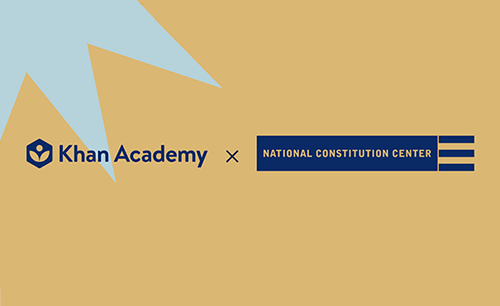At the National Constitution Center, we value civil dialogue, which empowers students to speak about constitutional and historical topics in ways that remain civil, respectful, and reflective. As you prepare to discuss these topics in your classroom, we encourage you to establish norms such as:
- Stay calm
- Listen patiently
- Listen actively
- Don’t speak twice until everybody has spoken once
You can find more support for establishing norms and civil dialogue practices in our Civil Dialogue Toolkit.
Recently, Mahmoud Khalil, who immigrated to the United States on a student visa and later obtained a Permanent Resident Card (sometimes called a “Green Card”), was detained by federal immigration officers and faces possible deportation after the State Department revoked his legal permanent resident status purportedly because of his participation in public pro-Palestine protests. The current case involving Khalil, a student at Columbia University in New York, may center on a law from the 1950s, and how courts interpret it.
Media Asset
In this Constitution Daily blog post, we explore the history of the government’s use of the Immigration and Naturalization Act of 1952, the constitutional questions raised by the Columbia University student and his lawyers and civil rights groups, and the potential impact on free speech and immigration policy.
Discussion Questions for Students
- What are the constitutional questions central to the detainment of Mahmoud Khalil? (Remember: A constitutional question asks what the federal government may do according to the Constitution.)
- Which branch(es) of government have authority over immigration policy and enforcement? How might that relationship impact this case?
- In this case, the government argues that they have the power to revoke Khalil’s permanent legal status because of the Immigration and Naturalization Act of 1952. What role has immigration law played in American history?
- Which clauses of the First Amendment are being cited as reasons against deportation? How have these clauses been interpreted by the Supreme Court over time?
Select an Optional Student Activity for Deeper Exploration
- Pick one of the First Amendment documents below and analyze it like a constitutional scholar, considering the legal components as opposed to the political. (Remember: A political question asks what the government should do, but constitutional questions ask what the government may do according to the Constitution). Create a visual representation of the background of the document, the First Amendment questions at the heart of it, and the arguments for both sides. Which side do you agree with, and why?
- Test your knowledge of the First Amendment in our interactive quiz game.
- Explore the Writing Rights interactive to learn about the documents the founders used to draft the First Amendment. Pick one of the documents that preceded the First Amendment and explain the connections. Why is understanding these influences important for understanding freedom of expression today?
- Find at least two Supreme Court cases that explore the interplay between immigration and the First Amendment. Summarize the question at the center of each case and provide no more than five bullet points for the majority and dissenting opinions of each.
Dig Deeper on this Content with Additional Resources
Historical Foundations through Primary Sources
- The First Amendment
- The Alien and Sedition Acts (1798)
- Espionage Act of 1917 and Sedition Act of 1918 (1917-1918)
- Zechariah Chaffee, Jr.’s “Freedom of Speech” (1918)
- Tinker v. Des Moines Independent Community School District (1969)
Develop Constitutional Thinking Skills With Current Events
- Common Interpretation and Matters of Debate over the First Amendment (Interactive Constitution essays)
- What are the limits of the right to assemble? (Khan Academy Constitution 101 student course video)
- Why are free speech and a free press important to a democracy? (Khan Academy Constitution 101 student course video)
- Free Speech on College Campuses: Where Should Universities Draw the Line? (America's Town Hall video)
- Why the First Amendment Matters Today (America’s Town Hall video)






